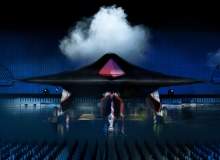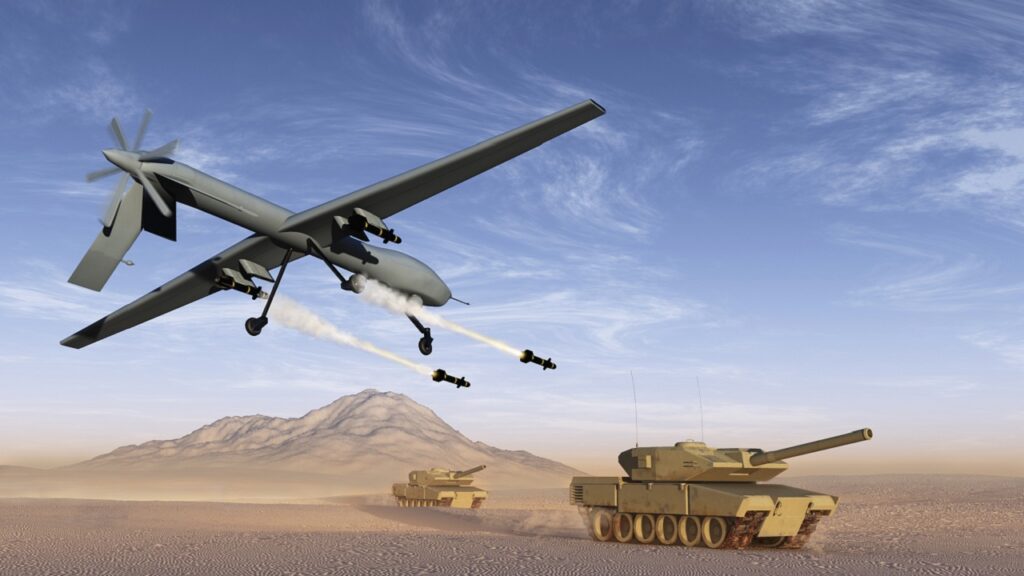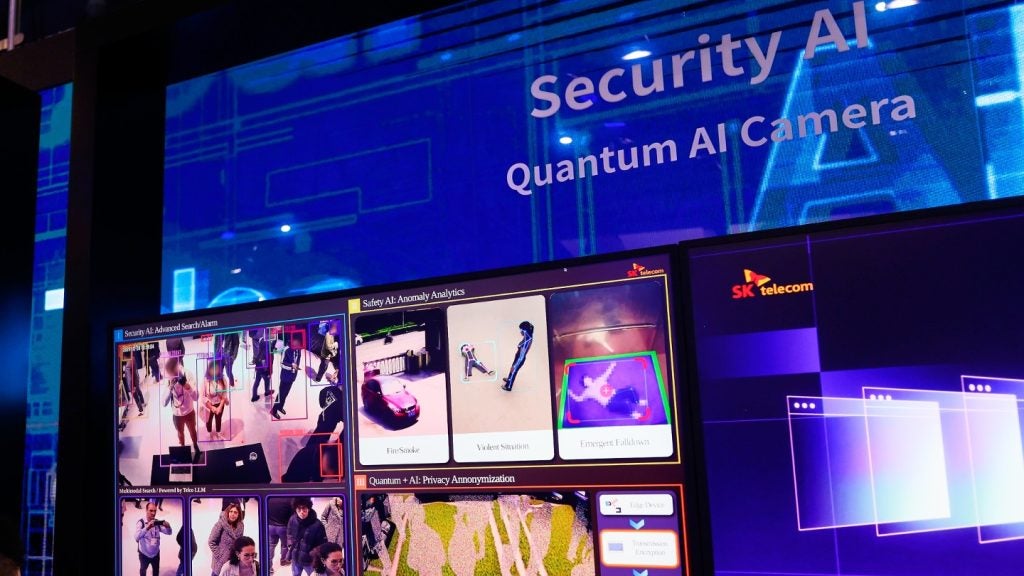
The unmanned aerial system (UAS) market has grown consistently in the face of defence cuts affecting military spending strategies worldwide, due in part to the money-saving potential of replacing manned missions with remotely piloted alternatives.
In a competitive market, manufacturers must respond to the strategic demands of the armed services, as well as urgent operational requirements while looking to the future through groundbreaking new technologies.
We talk to three manufacturers based in different countries about their UAS range, development strategies and how they work with the military to meet their needs.
Lesley Dobson talks on behalf of UK-headquartered BAE Systems, Jeff Brown represents the K-MAX manned / unmanned power-lift helicopter programme for US-based Lockheed Martin, while Dana Tal is a spokesperson for Israel-based Elbit Systems.
Berenice Baker: Outline your company’s UAS strategy and highlight some key systems you have in theatre.
Jeff Brown: Lockheed Martin has several deployed UAS, including the Desert Hawk III and the RQ-170 Sentinel, but I specialise in the K-MAX. Lockheed Martin and Kaman Aerospace have successfully transformed Kaman’s proven K-MAX power-lift manned helicopter into a UAS capable of autonomous or remote controlled cargo delivery. Its mission is cargo resupply for the US military.
The K-MAX is operational with the marine unmanned aerial vehicle squadron (VMU) one, cargo resupply unmanned aircraft system detachment, resupplying troops and augmenting Marine Corps ground and air logistics operations in Afghanistan.
How well do you really know your competitors?
Access the most comprehensive Company Profiles on the market, powered by GlobalData. Save hours of research. Gain competitive edge.

Thank you!
Your download email will arrive shortly
Not ready to buy yet? Download a free sample
We are confident about the unique quality of our Company Profiles. However, we want you to make the most beneficial decision for your business, so we offer a free sample that you can download by submitting the below form
By GlobalDataDana Tal: Elbit Systems offers a comprehensive range of UAS, from the man portable Skylark I mini-UAS through to various tactical UAS including the Skylark II, Hermes 90, Hermes 450 and up to the next generation Hermes 900 medium altitude long endurance (MALE) UAS.
Elbit Systems’s UAS are in service with numerous military and security users worldwide, contributing daily to vital national and coalition defence and security operations, as demonstrated by the Israel Defence Forces and other users around the globe.
BB: What are the latest developments in the systems you have under development?
LD: We are the project lead for the joint industry / UK MoD advanced technology demonstrator Taranis programme. Taranis will be a low observable unmanned autonomous combat system that can be used for both long-range reconnaissance and to provide a deep strike capability in a hostile environment.
Taranis was formally rolled out at a ceremony in July 2010. Initial ground testing started in 2010 and flight trials are planned for 2012.
JB: The navy and Marine Corps selected K-MAX for Afghanistan deployment in October 2011. On 17 December 2011, K-MAX became the service’s first-ever cargo unmanned aircraft system to deploy. Our expectations are that the K-MAX will provide a tremendous utility to the Marine Corps and ultimately save lives by reducing Marine Corps exposure to improvised explosive devices in theatre.
As of 31 January 2012, the unmanned K-MAX has successfully flown more than 50 unmanned resupply missions, delivering more than 100,000 pounds of cargo.
Additionally, during one recent resupply mission, the unmanned K-MAX successfully delivered a 4,200 pound generator in a single load, close to the current naval air systems command (NAVAIR) flight clearance in Afghanistan of 4,500 pounds.
DT: Elbit Systems’s most recent offering is the Hermes 900, a multimission medium altitude long endurance (MALE) UAS equipped with multiple advanced payloads.
Based on the well-established Hermes 450, it offers additional key capabilities such as longer endurance, flight altitudes of 30,000 ft and large modular payload capacity of up to 350kg. It incorporates innovative avionics and electronic systems, a low noise engine and optional solutions for sense-and-avoid capabilities and safe integration of the UAS into the relevant air space.
The Hermes 900 has already been selected by the Israeli Defence Forces (IDF) and countries in the Americas.
BB: Can you give examples of how your company works with industry, the military and ministries of defence to develop UAS?
LD: In November 2010, the United Kingdom and France agreed to collaborate on the next generation of unmanned air systems (UAS). During the course of 2011, BAE Systems and Dassault Aviation of France worked together, including the signing of a memorandum of understanding and the establishment of a dedicated team, named Telemos, to ensure readiness for a contract from both MODs to develop and deliver a MALE (medium altitude long endurance) UAS.
The two governments were scheduled to make an announcement in December 2011 which would ultimately lead to a UK / French MALE UAV design and development programme and UCAS (unmanned combat air system) demonstrator programme.
However, uncertainty in the Eurozone meant discussions on the Anglo-French Defence Accord were postponed, but may be resumed in the next Anglo-French Summit which will take place in mid-February 2012.
DT: Elbit Systems’s UAS are the backbone of the Israel Defence Force (IDF) UAS fleet.
Teamed with Thales UK, Elbit and U-TacS, the UK based Thales / Elbit joint venture, have designed and developed the UK Watchkeeper Tactical UAS with a design based on the Hermes 450 UAS, adapted to UK requirements.
U-TacS has already established comprehensive UAS development, production and support capabilities and will produce dozens of Watchkeeper UAS and other system elements.
BB: Is your company looking to move into the civil defence market, especially with national aviation authority legislation coming to enable UAS to share airspace with manned flight?
LD: ASTRAEA is a cross UK industry and government research programme investigating how to get UAVs into civil airspace. We are investigating both the technical and regulatory challenges to making this happen. The programme started in 2006 and is currently funded to 2013.
DT: The Hermes 450 is the first UAS certified to fly in Israel by the Israeli Civil Aviation Authority. To date, Hermes 450 has accumulated more than 300,000 operational flight hours with a remarkable safety and reliability record, and is one of less than a handful of UAS in the world to cross this operational flight hour barrier.
BB: Looking to the future, what is your company’s vision of how UAV technology will develop in the near-to-long term?
LD: BAE Systems is leading the field in the use of intelligent autonomy in its unmanned aircraft systems and has developed a range of smart systems which it believes will change the dynamics of future UAS operations.
Currently the majority of UAS are operated by remote control. We believe the next generation of UAS will be autonomous and we are leading the field in this area. BAE Systems has developed a number of systems to support this claim.
The Ministry of Defence (MOD) recently signed a new £40 million contract with BAE Systems to ensure the UK retains a leading edge in the next generation of combat air systems. The four-year future combat air system (FCAS) focused research contract aims to sustain and develop the UK’s critical technology and skills in this field.
It will inform the MoD’s unmanned air system strategy over the coming decades to ensure the best use is made of these new technologies.
JB: The K-Max definitely holds potential for more extensive resupply missions. Lockheed Martin is also developing the lighter-than-air high altitude airship (HAA) and its sub-scale demonstrator, the high altitude long endurance-demonstrator (HALE-D), which was launched in July 2011.
The HAA is an untethered, unmanned lighter-than-air vehicle that will operate above the jet stream in a geostationary position to deliver persistent station keeping as a surveillance platform, telecommunications relay, or a weather observer.






